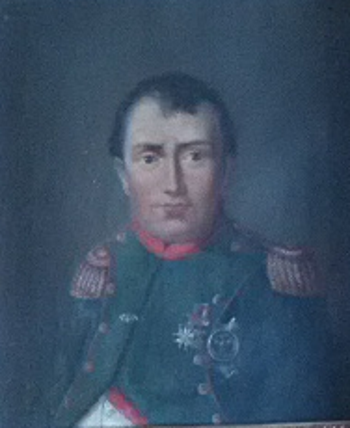






Portrait of Napoleon Bonaparte by Joseph-Benoît Suvée
Since the Renaissance and until 1900 artists used in oil painting opaque white made by lead (II)hydroxide carbonate $ { 2Pb^{2+} CO_3^{2-}} \cdot Pb^{2+}(OH^-)_2 $, white lead. This had the advantage of being easy to manufacture (In Holland, porous earth pots filled with sheets of lead are buried under a pile of cow manure. Then the white was scratched and mixed to flaxseed oil.!). This white made a good coverage, mingled easily with other dyes, dried quickly and even resisted the weather. Unfortunately, lead salts are toxic and cause poisoning by absorption through the respiratory tract or the skin. The use of white lead is banned today. Another disadvantage is the slow formation of black lead(II) sulfide(!) from the white lead. Equation:
The restoration is being done today by using hydrogen peroxide (see oxidation-reduction) that transforms $Pb^{2+}S$ into white $Pb^{2+}SO_4^{2-}$ Other opaque whites used: - Zinc oxide does not blacken because zinc sulfide produced by reaction with $H_2S is white too. Equation:
- Lithopone is the product mixture obtained by reaction between zinc sulfate and barium sulfide in aqueous phase: Equation:
- Barium sulfate produced by the reaction between barium chloride and sulfuric acid in aqueous phase: Equation:
- Titanium dioxide $TiO_2 $ is produced from a mineral called ilmenite